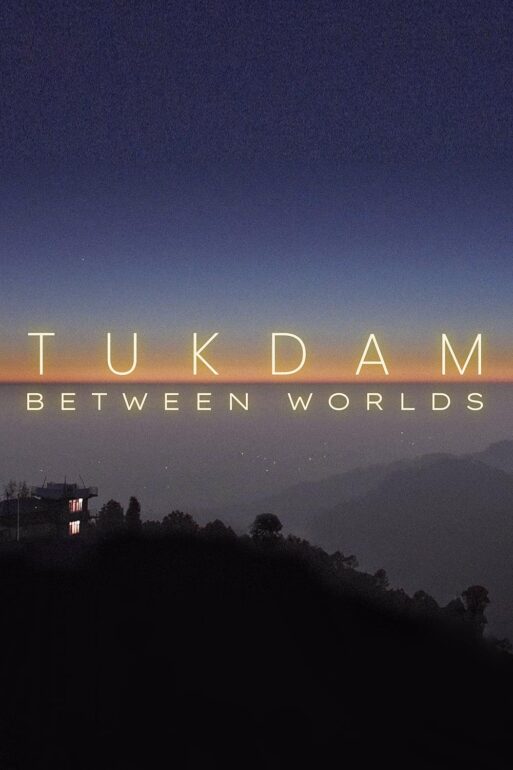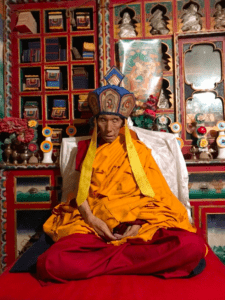
The 2022 feature documentary, “Tukdam: Between Worlds,” delves into the strange and unexplainable post-mortem state of “tukdam,” in which a person dies while meditating yet continues to seem very much alive. Tibetan Buddhist monks who die in this state often remain in an upright position and do not decompose for several days – sometimes, even weeks. Finnish Irish American filmmaker, Donagh Coleman, visited Tibetan communities in India and interviewed long-time Buddhist meditators, Western and Tibetan doctors, and even a mortician, who later handled one of the bodies. The film opens with the mortician’s striking observation: “I’ve probably seen several thousand dead bodies. But this was something that I’d never seen before.”

Tibetan monks who die in a state of “tukdam” appear to be alive hours, days and even weeks after death.
Credit: Journeyman Pictures
Photo and video footage depicts dead meditators sitting upright, in lifelike positions. Their skin remains supple – returning to its natural state after being pinched – and their bodies have not yet begun to change color or to smell. A Western audience may be most intrigued by the scientific researchers who remain puzzled by the enigma.
Neuroscientist Richard Davidson, founder and director of the Center for Healthy Minds at the University of Wisconsin-Madison was encouraged by His Holiness the 14th Dalai Lama to research the phenomenon. “There may be some more subtle brain activity that is responsible for the signs of “tukdam.” The fact that you see a flat line does not necessarily mean that the entire brain is dead,” Davidson said. While the researchers have been able to affirm that the meditators are clinically dead and that decomposition has yet to set in, they have not yet found a definitive explanation.
Tibetan Views of Consciousness Explain Tukdam
Tibetan doctors and spiritual practitioners see death and consciousness differently. Sonam Rinchen, a traditional Tibetan medicine doctor, explained that when a person dies, the earth element dissolves into water, water into fire, fire into air, air into space, and then everything into consciousness. And the Dalai Lama further describes the descending levels of the mind – from our everyday conscious awareness to dream states, to deep sleep, to fainting, and to “tukdam.”

Credit: Journeyman Pictures
Rinchen warns that hospitals that perform CPR on someone who is actively dying will prevent them from achieving that state of “tukdam” — and potentially, enlightenment or a desirable rebirth. “It’s not their fault – they are doing whatever they can to save you quickly,” he said. “But this will eliminate whatever chance you had to focus your mind.”
Some viewers may be put off by the sight of dead bodies in various states of decay shown in the film. While Tibetan meditators in “tukdam” appear life-like, those displayed by Daniel Wescott, a professor of forensic anthropology, demonstrate the process and rates of decomposition and may be disturbing to see.
Yet the film is worth watching — both for its insight into other perspectives, and for the question it provokes around our understanding of death and consciousness. As Davidson noted, “this work can begin to raise questions about the ultimate nature of consciousness and where that might come from. And these are some of the most profound and deepest questions in philosophy and science today.”
You can watch “Tukdam: Between Worlds” on Amazon Prime, Vimeo or Google Play.

 “Tukdam: Between Worlds,” by Donagh Coleman
“Tukdam: Between Worlds,” by Donagh Coleman


 First the Wealth Gap, Now the U.S. Has a Growing Health Gap
First the Wealth Gap, Now the U.S. Has a Growing Health Gap
 How to Comfort A Dying Loved One
How to Comfort A Dying Loved One
 Our Annual Seven Holiday Gifts for Someone Who Is Grieving, 2024 Edition
Our Annual Seven Holiday Gifts for Someone Who Is Grieving, 2024 Edition














